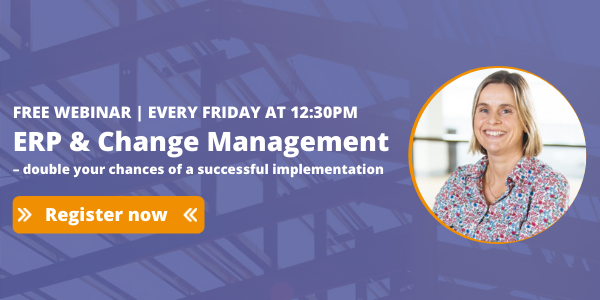ERP Implementations are often key offenders when it comes to project scope creep. Once others have a stake in the implementation, it is easy for expectations to run wild. It goes without saying that you need you keep a tight lid on the scope, but the reality is that there will always be changes or modifications along the way – even for the most successful projects.
If your ERP project’s scope is not clear, it can lead to ‘scope creep’. This can result in a stretch of resources, delays, and spiralling costs. Panorama Group cited scope creep as the biggest cause of budget over spend during an ERP Implementation, with 20% of organisations saying this was the main cause. However, there are simple steps that you can employ to reduce the risk caused by poor clarity in project scope.
What is Project Scope?
Scope is defined as the sum of a project’s products and the extent of those product’s requirements. Essentially, project scope is a list of requirements that define the desired result and act as a base for what needs to happen for the project to be a success. The scope is often outlined in the Project Charter (or Project Inception Document) which influences the decisions that are made and the management of resources and capacity. Alongside this, the defined scope draws the scope boundary, which verifies what is in and out of scope. Setting this boundary and creating common understanding is essential for creating clarity and eradicating scope creep.
So how do you keep a tight rein on project scope?
- Agree project principles and objectives up front
Will the ERP implementation be completed iteratively, allowing a version to be released for feedback via a Minimum Viable Product approach (MVP)? Agreeing how to run the project upfront will help you to keep a close hold on the scope. Once the principles have been agreed, it is important that these principles run through the day-to-day activities of the implementation and are not forgotten. Joël Collin-Demers, a Procurement Systems Expert says on LinkedIn “these principles need to be the north star that guide the team’s actions as they wade through the murky waters of IT implementations”.
2. Engage business decision makers early on
Nobody likes to be the last to know. As soon as the ERP Implementation receives the green light, you will need to create a plan for stakeholder engagement and ensure that the decision makers needed are aware, engaged and advocates of the project. You want to make sure clear expectations are set, to stop the flow of new requirements – so you can stick to the original scope. You can read more about effective communication planning here.
3. Review your to-be processes with system experts
Your proposed future processes can capture the required scope in and outside of the main system. Different areas of the business will be affected by these changes and it is valuable to get experts to go over this with you in advance of presenting the final plan and budget.
4. Be clear about points of integration
Make sure you consider integration points when defining the scope of an ERP programme. What systems and solutions are you looking to integrate? What are the various data flows?
5. Tight supplier contracts
Make sure that contract with your SI partner and third party suppliers are linked to a clear scope and deliverables. With loosely defined contractuals based on just time & materials you can incur cost quickly, without getting the desired results. If activities are not fully clear at the outset, agree to a scoping phase after which you can move to a fixed or payments on result model.
6. Introduce Scope Tolerance
Scope tolerance is the permissible deviation that is allowed before the situation needs to be escalated. By allowing for a small deviation in a project’s scope, there is a buffer for scope creep which gives flexibility if things do not go to plan. However, this buffer region needs to be clearly defined. Otherwise, scope creep will continue. This can be outlined in a Change Control process – where items outside of scope can be prioritised.
7. Change Control Process
Change is inevitable when it comes to implementing ERP. New requirements will emerge, issues or challenges come to light, company priorities may change and changes to legislation can have an impact to scope. Make sure you have a robust change control process in place so that when change happens, you can rigorously assess and understand the impact to the project, cost or timeline. You may want to find a manual work around or alternative trade-off to ensure your project stays on track.
8. Create a phase 2 backlog for future change that will be reviewed and prioritised following go-live
By this we mean capturing every product-related future task that may need to be completed. It is important that these additional features are captured along the way, but don’t let them seep in to the project along the way and affect the scope.
Scope creep is a common ailment of all projects and can go unnoticed until it is too late. However, there are preventative measures which can reduce the risks of scope creep, such as being cautious of scope tolerance and introducing a common understanding of project requirements. It is vital to ensure that there is clarity in the project scope from the beginning, ensuring that all team members are aware and informed before scope creep has the chance to derail the entire project.
If your ERP scope has started expanding, we can help you get everything back within reach. Contact EstherM@NineFeetTall.com
Source
https://www.linkedin.com/pulse/power-guiding-principles-erp-implementations-jo%C3%ABl-collin-demers/
144 Key ERP Statistics 2020/2021: Analysis of Trends, Data and Market Share – Financesonline.com


